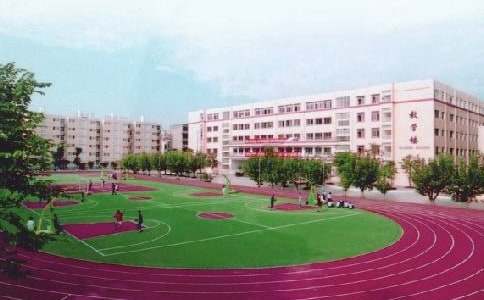国内英语资讯:Across China: China explores outdoor museum to rescue historic residences

HEFEI, May 21 -- A red-brick building with special carvings sits in sharp contrast to the local grey-white architecture of east China's Anhui Province, as do several hundred other buildings that have been relocated here.
In an outdoor museum in Bengbu city known as Bright Moon on the Lake, more than 450 dilapidated, but extremely beautiful buildings have been given a new lease on life. The red-brick building came from Shishi, Fujian Province.
Named after ocean-going vessel "Jinji" owned by the ancestors of the Cai Family, the house witnessed the ups and downs of generations. In 2024, the city government began urban renewal, and the house was scheduled to be demolished.
Cai Qingquan, nearing his 70s, came back from abroad to bid farewell to the house where he spent his childhood. "I can understand why the younger family members wished to move into modern homes, but it’s a pity to pull it down. It's a shame that we can't preserve the property of our ancestors."
"Not having been listed yet, many old buildings with local characteristics and history have already vanished," said Cheng Jiyue, an architect.
According to the third national cultural relics survey, more than half of the 40,000 immovable cultural relics that disappeared in the past 30 years were destroyed due to construction work. The wave of urbanization leaves these buildings in peril with no alternative but to be relocated.
The Bright Moon on the Lake Museum covers 53 hectares. The buildings were re-erected and categorized based on their place of origin. The Jinji house is now restored to its previous brilliance in the museum.
Feng Jicai, member of China's national experts committee for intangible cultural heritage protection, said that in countries such as Sweden, the Netherlands and Switzerland, endangered buildings that cannot be protected in their original places are often relocated to an outdoor museum.
Local governments are now exploring other ways to preserve their buildings.
In Pingyao in north China's Shanxi Province, the local government has been handing out maintenance subsidies to residents since 2024. By last October, over 10 million yuan (1.6 million U.S. dollars) had been spent on the repair of 76 buildings.
An ancestral hall in Yixian County, Anhui Province, has been turned into an antique furniture museum at a cost of 30 million yuan to the local government and private sector.
The situation of these residences is improving, Cheng said.
Not long ago, the outdoor museum sent a photo invitation to Cai, to reassure him that his ancestral home is under good protection and to come to visit when reconstruction is complete.
HEFEI, May 21 -- A red-brick building with special carvings sits in sharp contrast to the local grey-white architecture of east China's Anhui Province, as do several hundred other buildings that have been relocated here.
In an outdoor museum in Bengbu city known as Bright Moon on the Lake, more than 450 dilapidated, but extremely beautiful buildings have been given a new lease on life. The red-brick building came from Shishi, Fujian Province.
Named after ocean-going vessel "Jinji" owned by the ancestors of the Cai Family, the house witnessed the ups and downs of generations. In 2024, the city government began urban renewal, and the house was scheduled to be demolished.
Cai Qingquan, nearing his 70s, came back from abroad to bid farewell to the house where he spent his childhood. "I can understand why the younger family members wished to move into modern homes, but it’s a pity to pull it down. It's a shame that we can't preserve the property of our ancestors."
"Not having been listed yet, many old buildings with local characteristics and history have already vanished," said Cheng Jiyue, an architect.
According to the third national cultural relics survey, more than half of the 40,000 immovable cultural relics that disappeared in the past 30 years were destroyed due to construction work. The wave of urbanization leaves these buildings in peril with no alternative but to be relocated.
The Bright Moon on the Lake Museum covers 53 hectares. The buildings were re-erected and categorized based on their place of origin. The Jinji house is now restored to its previous brilliance in the museum.
Feng Jicai, member of China's national experts committee for intangible cultural heritage protection, said that in countries such as Sweden, the Netherlands and Switzerland, endangered buildings that cannot be protected in their original places are often relocated to an outdoor museum.
Local governments are now exploring other ways to preserve their buildings.
In Pingyao in north China's Shanxi Province, the local government has been handing out maintenance subsidies to residents since 2024. By last October, over 10 million yuan (1.6 million U.S. dollars) had been spent on the repair of 76 buildings.
An ancestral hall in Yixian County, Anhui Province, has been turned into an antique furniture museum at a cost of 30 million yuan to the local government and private sector.
The situation of these residences is improving, Cheng said.
Not long ago, the outdoor museum sent a photo invitation to Cai, to reassure him that his ancestral home is under good protection and to come to visit when reconstruction is complete.









